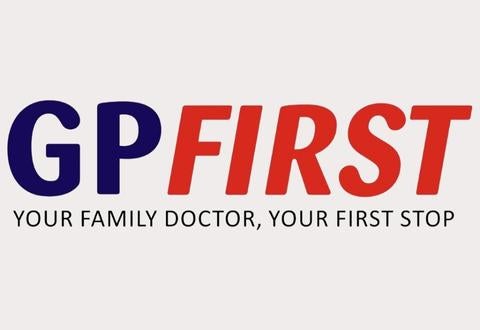Celebrating a Legacy of Trusted Care, Innovating Healthcare for Tomorrow
Changi General Hospital’s (CGH) legacy of care dates from 1935, when the old British Royal Air Force Hospital was built at Changi. Even back then, Changi was an area recognised as well-suited for relaxation and recreation — a place conducive for the healing of both body and mind. CGH is also significant in Singapore’s history; in 1997, Changi Hospital merged with Toa Payoh Hospital — which was renowned as an innovative general hospital with a strong tradition in clinical excellence — to become Changi General Hospital.
The CGH care team builds on this longstanding heritage of care and healing as an academic healthcare system, focused on medical and health research, clinical education and healthcare innovation, with a unique entrepreneurial spirit of enterprise. Big on translational research, robotics and education, CGH continually seeks new solutions to revolutionalise and streamline care for patients and make work for staff easier. Personalised care initiatives driven by the hospital, such as the cancer prehabilitation programme, our one-stop wound healing centre and smart vital signs monitoring, have been rolled out in recent years. In humanising healthcare, robots have become our helping hands in relieving manual or repetitive tasks. We are pushing the frontier in artificial intelligence to transform models of care.

Our care transcends hospital walls. The Caring General Hospital collaborates widely, both within and outside of healthcare to better health, and better healthcare in Singapore and globally. Putting patients first, CGH doctors, nurses, allied health professionals, and operations and administrative staff have persevered together. And as a team, they have overcome very challenging circumstances time and again during the throes of the COVID-19 pandemic. Harnessing technological solutions such as telehealth allowed us to care for the community to keep them well at home. Then British Prime Minister Winston Churchill’s tribute to the Royal Air Force for defending the British Isles during the Second World War, rings particularly true for our healthcare colleagues in this pandemic: “Never was so much owed by so many to so few.”
Getting to where we are today was certainly not achieved by accident, but the outcome of the work of each and every healthcare professional and planner, past and present, at CGH and Singapore. The hospital has been consistently recognised internationally by Newsweek as a World’s Best Smart Hospital, World’s Best Specialized Hospital and World’s Best Hospital (Singapore).
As CGH commemorates 88 years of heritage, we also celebrate our life, community and achievements as the Caring General Hospital, and the dynamic care transformation that the hospital has championed and continues to drive today, as your trusted care partner, innovating healthcare for tomorrow.
Trusted Care since 1935
We look back at the heritage of Changi General Hospital and share how the old Changi Hospital and Toa Payoh Hospital played pivotal roles in the heart of the Caring General Hospital of today.

1935
The British Royal Air Force (RAF) Hospital was built within the naval base at Changi as part of the development of the base’s welfare facilities.

The old Changi Hospital building.
1942-1947
During the war, Changi Naval Base became a Prisoner of War camp. After the end of the Japanese Occupation, the RAF Hospital began functioning again.
Two blocks were used for the hospital, which had a casualty entrance, two operating theatres, an X-ray room, dental clinics, wards, as well as a maternity wing, pharmacy and more.
1971
With the gradual withdrawal of the British troops after Singapore’s independence in 1965, the RAF Hospital was handed over to the newly-formed Commonwealth forces of Australia, New Zealand and United Kingdom, and became known as the ANZUK Hospital. It was subsequently renamed as the UK Military Hospital.
1974
A former British officers’ club nearby was converted to the Changi Chalet Hospital. The hospital served patients from the nearby Changi Prison Hospital and polyclinics on Pulau Tekong and Pulau Ubin, Singapore Armed Forces (SAF) personnel and recovering patients from other government hospitals.

Nurses at the main entrance of
the old Changi Hospital.
Late 1975
The UK Military Hospital was handed over to the Singapore government and renamed the SAF Hospital, providing free medical care for SAF personnel and their immediate family members. Its services were gradually extended to members of the public.
1976
The SAF Hospital was officially taken over by the Ministry of Health (MOH). Combining with the nearby 36-bed Changi Chalet Hospital, Changi Hospital was formed on 1 July 1976.
1997
Changi Hospital ceased operations.

The old hospital buildings in the present day.


One of the buildings of Thomson Road Hospital.
1959
Thomson Road Hospital was opened to meet the growing demand for medical services in Singapore. It would be the first district hospital with its own surgical unit.
1965
The hospital built up a reputation for postgraduate clinical training and clinical research. Nursing training was also formalised when the School of Nursing for Pupil Assistant Nurses officially opened.
1968
Recognised as an acute hospital offering a wide range of services including surgery, neurosurgery, X-ray, obstetrics and gynaecology, the hospital was renamed the Thomson Road General Hospital.
1970s
The hospital introduced new clinical specialties such as neonatology and orthopaedic surgery, and the Department of Anaesthesia. More doctors joined the hospital, and were involved in research in the areas of lactose intolerance, gastrointestinal bleeding and peptic ulcers.
The X-ray and Accident & Emergency (A&E) departments implemented 24-hour operations. The hospital also improved its bed arrangements, providing for greater privacy and comfort. It was the first hospital to introduce B2 class wards, a pilot project of the government medical service.

Entrance to the TPH A&E.
1975
The hospital was renamed Toa Payoh Hospital (TPH) after the newly-built satellite town that it served.
1980s
The 1980s were characterised by rapid growth and expansion. The A&E Department underwent a face-lift — computerisation was introduced to facilitate registration and the retrieval of information. In 1985, the hospital began concentrating on two key specialisations — urology and gastroenterology.
1990s
TPH was restructured on 1 April 1990. The 1990s was a significant era for the hospital, which became one of the busiest hospitals in Singapore. More medical services, including ear, nose and throat (ENT) and eye departments, and new programmes were introduced to improve service and care. Nurses started “patient-centred nursing”, focusing on caring for patients and understanding their medical and emotional needs, instead of the tasks to be performed. Patient load increased to maximum capacity.

1997
Toa Payoh Hospital and Changi Hospital merged to become the New Changi Hospital, and was later renamed Changi General Hospital (CGH). It operated a custom-built general hospital facility in the heart of eastern Singapore at Simei, with a then-capacity of 801 beds.

1998
CGH was officially opened on 28 March 1998 by then Deputy Prime Minister Lee Hsien Loong. At its opening, it had a wide range of specialties including general medicine, general surgery, orthopaedic surgery, geriatric medicine, rehabilitation medicine, psychiatry, ENT and eye, and sub-specialties in gastroenterology, cardiology and urology.



The CGH Geriatric Centre
offers one-stop services
for elderly patients.
2000s
CGH launched new clinical services in sports medicine, dermatology, psychological medicine, rheumatology and neurosurgery.
It opened a one-stop Diabetes Centre and established the largest multi-disciplinary sports centre in Singapore, the Singapore Sport & Exercise Medicine Centre @ CGH, catering to both recreational and competitive athletes.
In 2004, CGH opened a new Geriatric Centre that houses both the Specialist Clinics and the Geriatric Day Hospital, offering the convenience of a one-stop service for elderly patients.
2011
CGH became a founding member of the Eastern Health Alliance, a regional health system to provide seamless, quality care for eastern Singapore.

The Changi Simulation Institute.
2012
CGH opened the Centre for Innovation, a platform for healthcare technology translation; and the Changi Simulation Institute, an integrated simulation training centre for healthcare professionals.
2014-2017
CGH launched a series of programmes to right-site and ensure continuity of care.
CGH’s GPFirst programme encourages residents in the east to visit their General Practitioners first for mild to moderate conditions. CareLine, a personal care telephone service, provides 24/7 health and social support to vulnerable seniors in need of urgent assistance while keeping them safe and healthy at home. The Health Peers Programme is a partnership with community stakeholders and government agencies to encourage residents to lead healthier lives.
2015
The Integrated Building (IB), jointly run by CGH and St Andrew’s Community Hospital (SACH), was opened, providing a new model of care to optimise rehabilitation for patients.

The CGH dementia ward is one of the unique care facilities at the Integrated Building.
2018
CGH joined the SingHealth Duke-NUS Academic Medical Centre (AMC) family as part of the nation’s reorganisation of the public healthcare system into three integrated clusters, to better meet Singaporeans’ future healthcare needs.
CGH’s new Medical Centre is opened, enhancing specialist care by providing care to patients with complex medical conditions in a more integrated way.

The CGH Medical Centre provides enhanced specialist care for patients.
2019
CGH set up the Changi Aviation Medicine Centre, Singapore’s first aviation medicine centre within a government restructured hospital, offering customised care for pilots, cabin crew and air traffic control staff.

2021
The Shimadzu-CGH Clinomics Centre, opened by Deputy Prime Minister and Coordinating Minister for Economics Policies Mr Heng Swee Keat, conducts mass spectrometry-based clinical testing and research supporting personalised treatment, for better clinical care for patients with hypertension and other chronic diseases.
The CGH Wound Healing Centre, a one-stop multi-disciplinary centre to provide early interventions and outpatient treatment of chronic wounds, was opened by then Senior Minister of State for Health and Manpower Dr Koh Poh Koon.

The Shimadzu-CGH Clinomics Centre conducts research to better clinical care for patients with hypertension and other chronic diseases.

The CGH Wound Healing Centre provides easy, fast-tracked access and convenience for patients with non-healing wounds.
2022
CGH developed partnerships with academic and industry partners such as Changi Airport Group and CapitaLand, to advance health, wellness and innovation beyond the hospital for various communities.


CGH continues its culture of care for patients over the years.
2023
CGH celebrates 88 years of trusted care.
Check out past clippings on CGH here:
- From Anzuk, UK Military to plain old Changi, The Straits Times, 29 January 1997, Page 2
https://eresources.nlb.gov.sg/newspapers/Digitised/Article/straitstimes19970129-1.2.92.4
- Changi Hospital opens tomorrow, The Straits Times, 30 June 1976, Page 6
https://eresources.nlb.gov.sg/newspapers/Digitised/Article/straitstimes19760630-1.2.28
- Staff want to keep hospital's soul in move to new home, The Straits Times, 22 February 1997, Page 3
https://eresources.nlb.gov.sg/newspapers/Digitised/Article/straitstimes19970222-1.2.60.3.1
From past to present – the hospital that cares
Changi General Hospital (CGH) celebrates a legacy of clinical excellence and trusted care since 1935.

CGH continues its culture of care for patients over the years.
In 2023, CGH commemorates its legacy of care with the unveiling of its 88th anniversary logo.

The remarkable and progressive evolution of the hospital over the years is built on a strong foundation laid by former healthcare leaders, staff and patients, and further strengthened by the current CGH care team. The hospital is now ranked among the World’s Best Smart Hospitals 2023, World’s Best Specialized Hospitals 2023 and World’s Best Hospitals 2022 (Singapore) by Newsweek and data firm Statista.
It is thus apt to encapsulate the continual commitment, dedication and passion of the hospital care team in providing care at every touchpoint, from the moment patients enter the hospital, to their recovery and return home to their families, through the hand and heart icons in CGH’s 88th anniversary logo. The skyline of the hospital within the logo also depicts CGH’s transformational work since 1935 as the Trusted Care Partner, Innovating Healthcare for Tomorrow.
To honour the enduring contributions and experiences of former and present staff, donors, patients and the community, CGH also launched the Memories of CGH – Legacy of Care initiative, calling upon the community to share their treasured memories and memorabilia of CGH, the former Toa Payoh Hospital and former Changi Hospital.


















